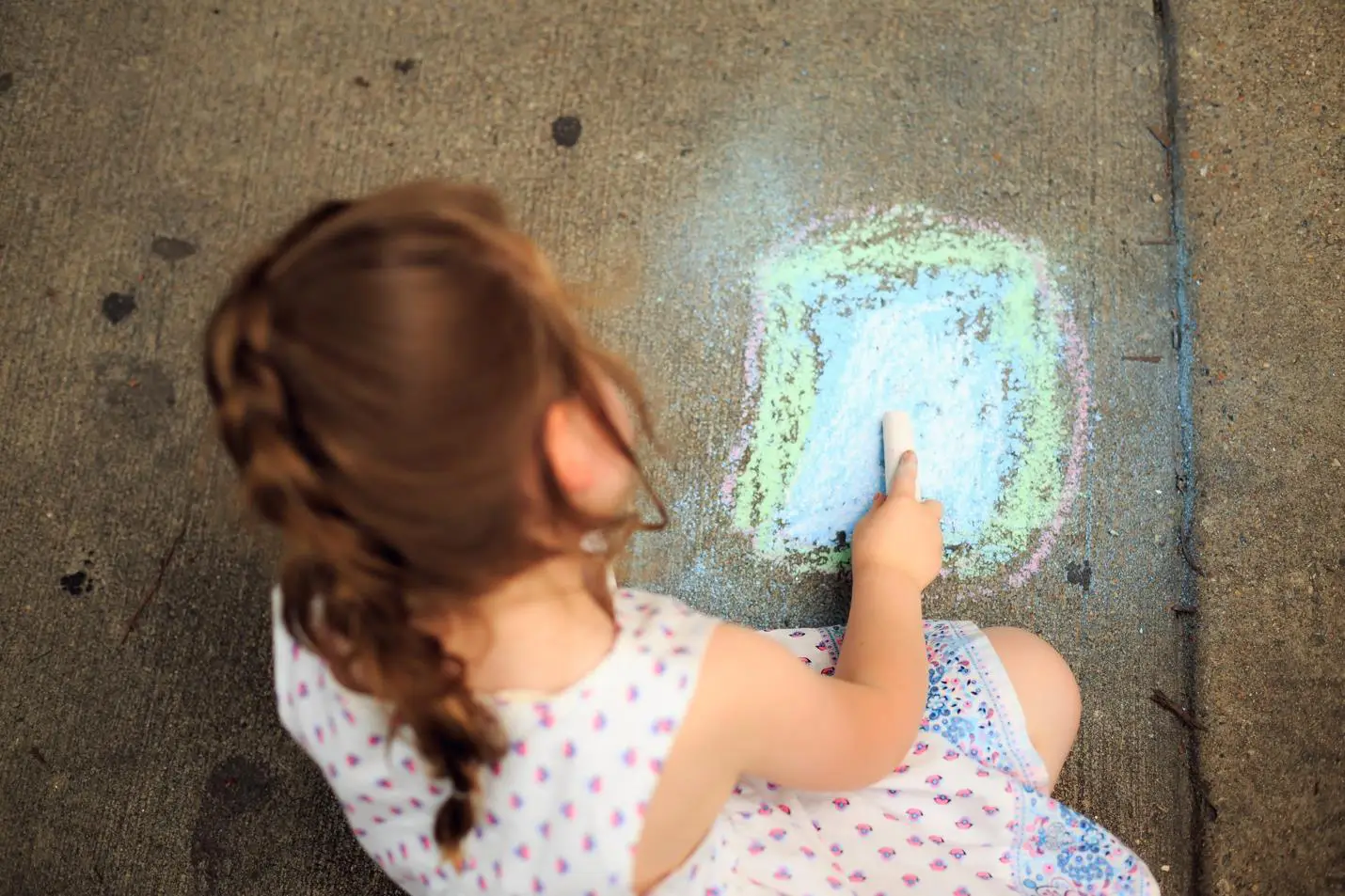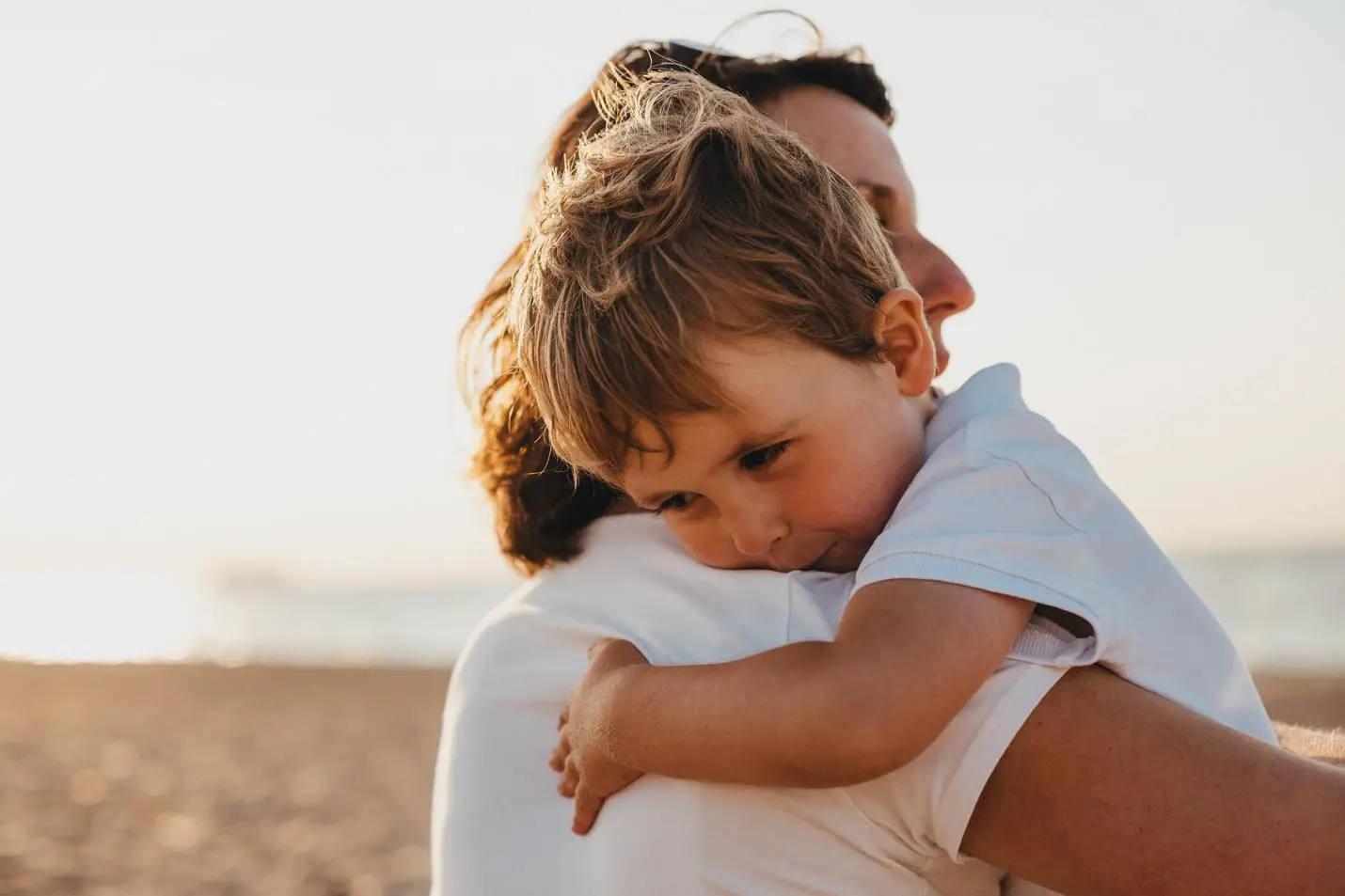Supporting Grieving Children
Understanding and Navigating Childhood Grief
Losing a loved one is a challenging experience for anyone, but for children, it can be particularly confusing and heartbreaking. As parents and caregivers, it’s important to recognize the unique challenges that childhood grief presents and the importance of providing age-appropriate support and guidance during a difficult time.

In this article, we’ll cover topics to help you better understand and navigate the complexities of childhood grief, while also offering practical advice, insights, and resources. By being better prepared, we can ensure grieving children receive the care and attention they need to cope with their loss and move forward in a healthy manner.
How Grief Affects Children Differently than Adults
While grief is a universal experience, it can affect children and adults differently due to their capabilities of thinking, feeling, and behaving. Children's brains are still developing, and their understanding of complex concepts like death, loss, and the permanence of it may be limited. This can lead to a range of responses that may not always align with what adults might expect.
Emotionally, children may have difficulty processing and expressing their feelings, making it harder for them to articulate and express their grief. They might not cry as much or may appear unbothered by the loss on the surface. This does not mean they are not grieving; rather, their grief may manifest in more subtle ways.
Behaviorally, children may exhibit regressive behaviors, such as thumb-sucking, bedwetting, or clinging to caregivers more than usual. They might also have trouble concentrating or experience changes in their sleeping and eating patterns.
Impact of age, developmental stage, and previous experiences
A child's age, developmental stage, and previous experiences with loss can significantly impact their grieving process. Younger children may have a limited understanding of death and struggle to grasp the permanence of their loss, while older children and teenagers may have a deeper comprehension, but still grapple with complex emotions and questions about death.
A child's previous experiences with loss can also shape their response to grief. If a child has faced multiple losses, they may have a heightened sense of anxiety or fear surrounding the concept of death. If they have never experienced the death of a loved one before, they may feel overwhelmed, confused, and unsure of how to cope.
Recognizing Signs of Grief in Children

Children may not always express their grief in ways that are immediately recognizable. Being aware of the common emotional, behavioral, and physical signs can help you identify when a child is grieving and offer the necessary support. Some common signs of grief in children include:
1. Emotional signs: Many of these may be similar to emotions experienced by adults; sadness, anxiety, anger, guilt, confusion, or numbness. These emotions may be displayed openly or hidden beneath a seemingly calm exterior.
2. Behavioral signs: Changes in sleep patterns, appetite, and social interactions. The child may withdraw from friends and family, have difficulty concentrating, or if younger, show regressive behaviors such as thumb-sucking or bedwetting.
3. Physical signs: Complaints of headaches, stomachaches, or fatigue. These symptoms may be a manifestation of the child's emotional distress.
Grief manifestation based on age and developmental stage
The way a child grieves can also vary depending on their age and developmental stage. Here are some examples of how grief may manifest differently based on age:
1. Preschool-aged children (3-5 years): May struggle to understand the permanence of death, leading to questions about when the deceased will return. They may also exhibit magical thinking, believing they can bring their loved one back through specific actions or behaviors.
2. Elementary school-aged children (6-12 years): May have a more developed understanding of death but still struggle with the concept of permanence. They might ask detailed questions about the deceased and may experience guilt or feelings of responsibility for the loss.
3. Adolescents (13-18 years): Often have a more mature understanding of death but may struggle with complex emotions and questions about the meaning of life. This understanding of the reality of death can also lead to worry about their own mortality. They might experience mood swings, engage in risk-taking behaviors, or withdraw from social activities.
Talking to Children about Death and Grief
Discussing death and grief with children can be challenging, but open communication is vital in helping them process their feelings and understand the situation. Here are some guidelines for discussing death and grief with children in an age-appropriate manner:
1. Be honest: Provide clear and truthful information about the death, using simple language that the child can understand. It’s usually best to avoid euphemisms that may confuse them, such as "gone to sleep” or “gone on a long vacation.”
2. Encourage questions: Allow the child to ask questions and answer them honestly, even if the answers are difficult or uncertain. This helps create a safe space for the child to express their feelings and concerns.
3. Use relatable examples: Use age-appropriate examples from books, movies, or real-life situations to help explain the concept of death and loss.
4. Validate their feelings: Acknowledge the child's emotions and reassure them that it's okay to feel sad, angry, or confused.
5. Choose a comfortable setting: Children may be more open to discussing their feelings in a comfortable and familiar environment, such as while playing or engaging in a calming activity. This can help them feel more at ease and willing to share their thoughts.
Answering difficult questions and addressing fears or misconceptions
Children may have a range of questions and concerns about death and grief. Here are some tips for addressing their questions and fears in a compassionate and reassuring manner:
1. Be patient: Children may need time to process the information and may ask the same questions multiple times. Be patient and provide consistent, reassuring answers
.2. Admit when you don't know: It's okay to admit when you don't have all the answers. This can help the child understand that grief is a complex and often uncertain process.
3. Address misconceptions: Children may have misconceptions about death or believe they played a role in the loss. Gently correct any misunderstandings and reassure the child that the death was not their fault.
4. Offer reassurance: When a loved one passes, many children worry they may lose someone else they love soon after. Address any fears or worries the child may have about their own safety or the well-being of other loved ones. Offer comfort and stability by emphasizing that they are loved and cared for and that no one is in danger.
Other Resources
Additionally, books can be a valuable resource to help facilitate conversations about death and grief with children. There are many children's books available that address these topics in a sensitive and age-appropriate manner. FamilyEducation has compiled a list of 12 children's books that can help explain tragedies and death. You can explore this list here: 12 Children's Books to Help Explain Tragedies and Death. These books can provide a helpful starting point for discussing these difficult subjects with your child while offering comfort and understanding through storytelling.

Providing Emotional Support
Validating a child's feelings and offering reassurance during the grieving process is an important part of helping them cope with their loss. Children need to know that their emotions are normal and that it's okay to feel a range of emotions, from sadness to anger to confusion. By acknowledging and validating their feelings, you create a safe space for the child to recognize and express their emotions, as well as begin healing.
Ways to comfort and support a grieving child
1. Spend quality time together: Make an effort to spend time with the child, engaging in activities they enjoy or simply being present with them. This can help them feel supported and less alone in their grief.
2. Listen to their concerns: Encourage the child to share their thoughts and feelings and listen empathetically, without judgment. This can help them process their emotions and feel understood.
3. Encourage them to express their feelings: Depending on their age, many children are still trying to develop the ability to convey emotions and feelings. Try helping the child find appropriate ways to express what they’re feeling, whether through talking, writing, drawing, or other creative outlets. This can assist them in processing their grief and finding a sense of relief. We’ll talk more about ways to do this in the next section.
4. Offer physical comfort: Sometimes, a hug or a gentle touch can be comforting and help the child feel safe and loved.
5. Be patient and consistent: Grieving is a process that takes time, and just like many of us, the child may have good days and bad days. Be patient and consistently offer support, understanding that their needs may change over time.
Encouraging Healthy Grief Expression
Encouraging children to find healthy ways to express their grief is essential for their emotional well-being. Healthy grief expression allows them to process their emotions, develop coping skills, and build resilience. It can also help prevent feelings of isolation, as the child feels their emotions are valid and understood.

Age-appropriate activities and techniques for grief expression
- Art therapy: Encourage the child to draw, paint, or create collages that represent their feelings or memories of the deceased. This can help them process their emotions in a non-verbal manner and provide a sense of comfort.
- Storytelling: Invite the child to share stories or memories of their loved one, either verbally or through writing. This can help them preserve cherished memories and better understand their feelings.
- Play therapy: For younger children, play can be an effective way to process their emotions. Engage in imaginative play, using toys or games that allow the child to express their feelings and explore the concept of death and loss.
- Music and movement: Encourage the child to express their emotions through music, whether by playing an instrument, singing, or dancing. This can be a therapeutic outlet for them to release their feelings.
- Journaling: For older children and adolescents, writing in a journal or creating a memory book can be a helpful way to process their grief and document their feelings and memories.
Maintaining Routines and Boundaries
Maintaining routines and providing structure during the grieving process are essential for a child's sense of security and stability. Familiar routines can help create a sense of normalcy and predictability during a time of upheaval and uncertainty. Structure can also help children feel cared for and reassured that their needs will continue to be met.
Balancing flexibility with consistency
While maintaining routines is important, it's also crucial to strike a balance between consistency and flexibility. Grieving children may need extra support or accommodations, and being too rigid in enforcing routines may cause additional stress. Here are some ways to balance flexibility with consistency:
1. Prioritize important routines: Focus on maintaining key routines, such as bedtime, mealtime, and school attendance, while allowing for some flexibility in other areas of the child's day.
2. Allow for emotional expression: Be sensitive to the child's emotional needs and allow for moments of grief expression, even if it means deviating from the usual routine.
3. Communicate: Talk to the child about how they’re feeling. Be aware of the needs they convey, both verbally and non-verbally, and adjust their schedule accordingly.
4. Be patient: Understand that the grieving process is different for everyone, and the child may need more time or support to adjust to the loss. Be patient as they navigate their emotions and work towards finding a new sense of normalcy.
5. Reassess and adjust: Regularly reassess the child's needs and make adjustments to routines as needed, keeping in mind that their needs may change as they progress through the grieving process.
Grieving as a Family

Grieving together as a family has several benefits that can help children feel more connected and supported during their grieving process:
1. Shared experience: Grieving together allows family members to understand and empathize with each other's emotions, creating a strong support network.
2. Open communication: Encouraging open communication about the loss within the family can help normalize grief expression and create an environment where children feel safe to share their feelings.
3. Emotional support: Family members can offer emotional support and comfort to one another, helping to alleviate feelings of isolation and loneliness.
4. Modeling healthy grief: When children see adults in their family grieving in healthy ways, they learn how to process and express their own emotions more effectively.
Suggestions for family activities
Incorporating family activities and rituals into the grieving process can help children feel more connected and supported. This may include:
1. Memory sharing: Set aside time to share memories, stories, and experiences involving the deceased loved one. This can help preserve cherished memories and reinforce the bond between family members.
2. Create a memory box: As a family, gather mementos, photos, and other keepsakes of the deceased and create a memory box. This can be a comforting way for children to remember their loved one and feel connected to them.
3. Hold a memorial service or ritual: Organize a family memorial service to honor the deceased loved one. This can provide a sense of closure and help children feel more connected to the person they lost.
4. Establish new traditions: Create new family traditions that incorporate the memory of the deceased loved one, such as lighting a candle in their memory during holidays or visiting their gravesite on special occasions.
Seeking Professional Help

When and why to seek professional help for a grieving child
While family support is invaluable, there are times when professional help, such as a grief counselor or therapist, may be beneficial for a grieving child. Some situations in which professional help might be necessary include:
1. Prolonged or intense grief: If the child's grief appears to be worsening or lasting longer than expected, professional help may be necessary to address potential complications, such as complicated grief or depression. It’s important to remember though, the child’s grief timeline is not our own and it may take longer than we believe it should. Take into account the other signs listed below, along with the length of time.
2. Changes in behavior or functioning: If the child experiences significant changes in their behavior, academic performance, or social functioning, it may be a sign that they need additional support to cope with their grief.
3. Difficulty expressing emotions: If the child seems unable or unwilling to express their emotions, a grief counselor or therapist can help them find healthy ways to process their feelings.
4. Parental concerns: If you, as a parent or caregiver, feel overwhelmed or unsure about how to support the child, seeking professional guidance can be beneficial for both you and the child.
Finding resources and support
1. Ask for recommendations: Speak with your pediatrician, school counselor, or other trusted professionals for recommendations on grief counselors or therapists who specialize in working with children.
2. Research local resources: Look for local grief support groups, therapy centers, or counseling services that offer programs specifically designed for children and families.
3. Explore online resources: With technology today, there are numerous online resources available, such as grief support forums, virtual support groups, and tele-therapy services. These options can provide accessible and flexible support for both children and families dealing with grief.
4. Consider the child's age and developmental stage: When seeking professional help, make sure the chosen counselor or therapist has experience working with children of similar age and developmental stage to ensure the best possible support.
5. Inquire about specific grief-related training: Ask potential counselors or therapists about their training and experience in grief counseling, particularly in relation to children and families.
6. Involve the child: Depending on the child's age and maturity, involve them in the decision-making process and listen to their preferences and concerns.
Conclusion
Supporting grieving children requires a compassionate and empathetic approach, recognizing the unique challenges they face as they navigate the complexities of loss. As a caregiver, your role is vital in providing a safe and nurturing environment for children to process their emotions and begin their journey toward healing. Creating a strong support network, both within the family and by seeking professional help when necessary, is essential for fostering emotional resilience in grieving children.
Encouraging healthy grief expression, maintaining routines, and utilizing available resources are all important aspects of guiding children through this challenging time. As you continue to support the grieving child in your life, remember that your patience, understanding, and love can make a significant difference in their healing process. Don't hesitate to explore additional resources and support options, as these can offer invaluable assistance for both you and the child. By working together, you can navigate the grieving process and foster a sense of hope and healing.
If you need further guidance or assistance, please don't hesitate to contact us at Partlow Funeral Chapel. Our family is here to provide the support and resources you and your loved ones need during this difficult time.
